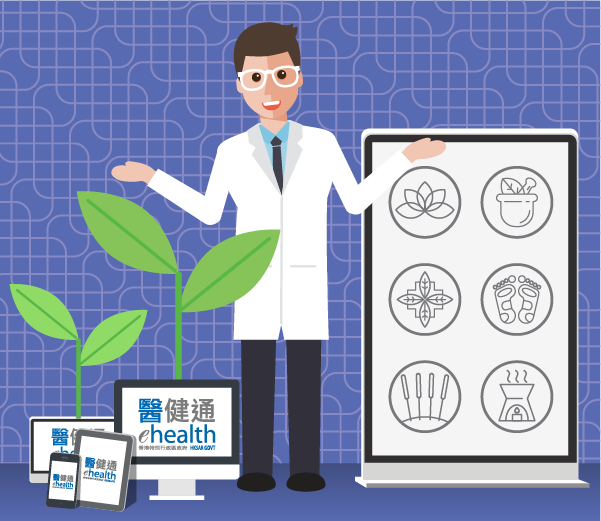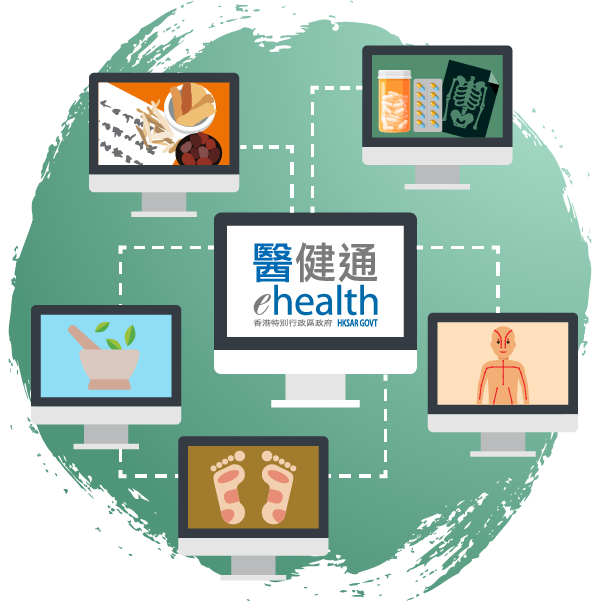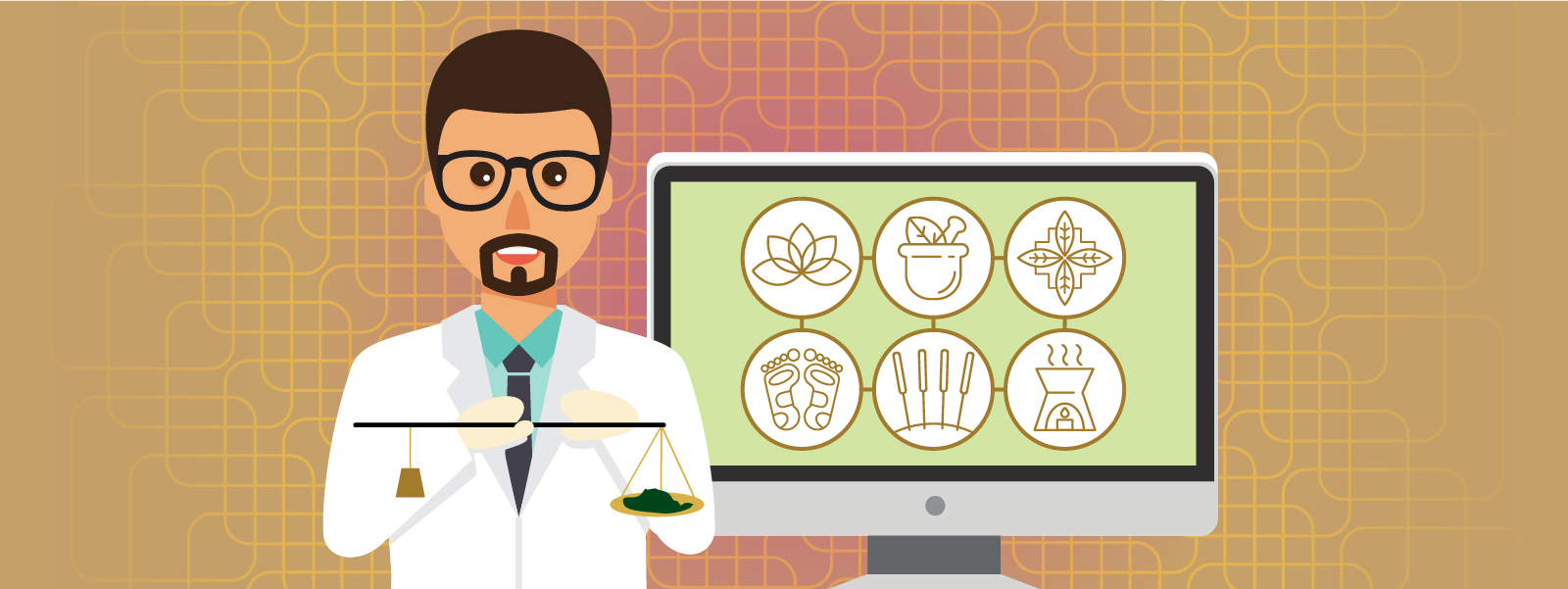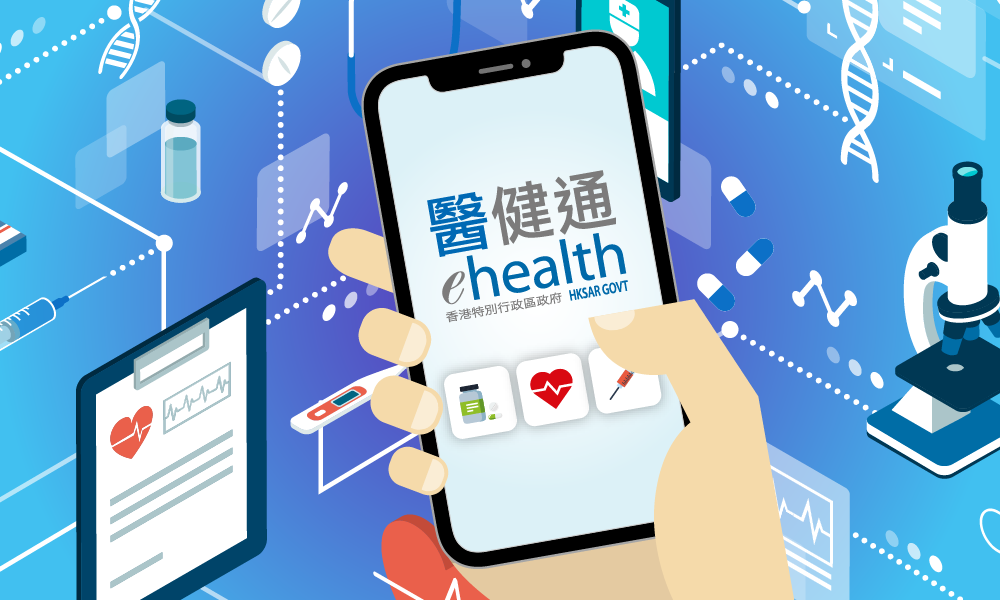All Set for Chinese Medicine Information Sharing
The use of Chinese medicine (CM) in integrated treatment is gaining increasing recognition and popularity amongst the general public. The Government has been working on multiple fronts to promote the development and incorporate CM into the healthcare system in Hong Kong. In support of these initiatives, Stage Two Development of the Electronic Health Record Sharing System (eHRSS) includes the broadening of sharable scope to cover CM data. To pave the way for CM information sharing, a turn-key clinical management system (CMS), the CM Information System (CMIS) On-ramp, has been developed by the Government for free adoption by CM clinics.
After years of concerted effort, CM information sharing in eHRSS is now all set for boarding. To prepare for the journey, there are three major goals to accomplish: (1) build up data standards of CM information, (2) computerise CM practice, and (3) strengthen the support to CM sector for participating in eHRSS.
The Path to Successful CM Information Sharing
The path to CM information sharing started with the standardisation of terminology which is crucial to effective communication among CM practitioners. Domain groups have been established to define the CM data standards covering not only the diagnoses, treatment methods but also the names of Chinese medicines required to enable CM clinical data sharing and interoperability. The long history of CM and clear geographical differences of CM practitioners have caused divergence among clinical terms particularly for some CM drugs and herbs. For example, "山藥 (Shan Yao)" is commonly named as "淮山 (Huai Shan)" or "懷山 (Huai Shan)", while "三七 (San Qi)" is often called "田七 (Tian Qi)" or "滇七 (Dian Qi)". Thanks to the thorough discussion and contribution by stakeholders and experts of the domain groups, a comprehensive set of standardised terminologies, covering more than 4 000 terms commonly adopted by CM practitioners in Hong Kong, has been established. The review and further standardisation of CM terminologies will continue as an on-going process. A transmission interface between the Department of Health and eHRSS was also developed to allow healthcare providers to use standardised proprietary Chinese medicine terminologies to intercommunicate in the sharing.

The tradition of hand-written medical records remains quite common in the CM sector today. To facilitate the computerisation and sharing of CM information in eHRSS, the CM sector has to be equipped with the necessary technical capability. To this end, the CMIS On-ramp has been developed as a turn-key CMS to support the daily administration and operation of a CM clinic. Apart from providing basic functions of a typical system such as patient registration and appointment, clinical documentation, prescriptions and dispensary, billing etc., special features related to consultations on non-drug treatments such as acupuncture and bone-setting by CM practitioners are included. While standardised terminologies are incorporated, the system also allows customisation to better meet users' needs. Most importantly, CMIS on-ramp complies with the security and system interoperability requirements for data sharing in eHRSS. Following a series of engagement and usability workshops with the CM sector (covered in the 18th issue eHealth News "Getting Ready for Chinese Medicine Information Sharing"), invitation to participate in the CMIS On-ramp Pilot Programme had started earlier this year. The aim of the Pilot Programme is to collect users' feedback from practical usage of the application and experience for improvement. The experience gained will also be invaluable for the eventual rolling out of information sharing amongst CM practitioners through eHRSS.

With the CMIS On-ramp ready, measures to encourage the participation of CM practitioners were introduced in tandem. The CM Clinic Improvement Funding Scheme (the Scheme) under the Enterprise Support Programme of the $500 million CM Development Fund (CMDF) is now open for applications. Amongst others, the Scheme aims to provide applicants with financial support for enhancing their medical record systems. Eligible CM clinics can apply for the fund for installing CMIS On-ramp and procuring related hardware equipment (such as desktop computers and tablets) as well as technical support services. More details can be found at the CMDF Webpage.

eHR Sharing Among CM Practitioners
The proposed sharable scope of CM information in eHRSS during the initial phase has been worked out, which include encounters and appointments, allergies and adverse drug reaction, CM diagnosis and procedures, as well as CM prescribing and dispensing records. As a first step, the sharing of CM information among CM practitioners is targeted to be launched by end of 2021. Stakeholder engagement, review and improvement will continue with the aim of facilitating and encouraging the wider adoption of eHR by the CM sector, and fostering the provision of integrated and collaborative patient-centered care for the benefits of patients.








 Download PDF (Full Version)
Download PDF (Full Version)



